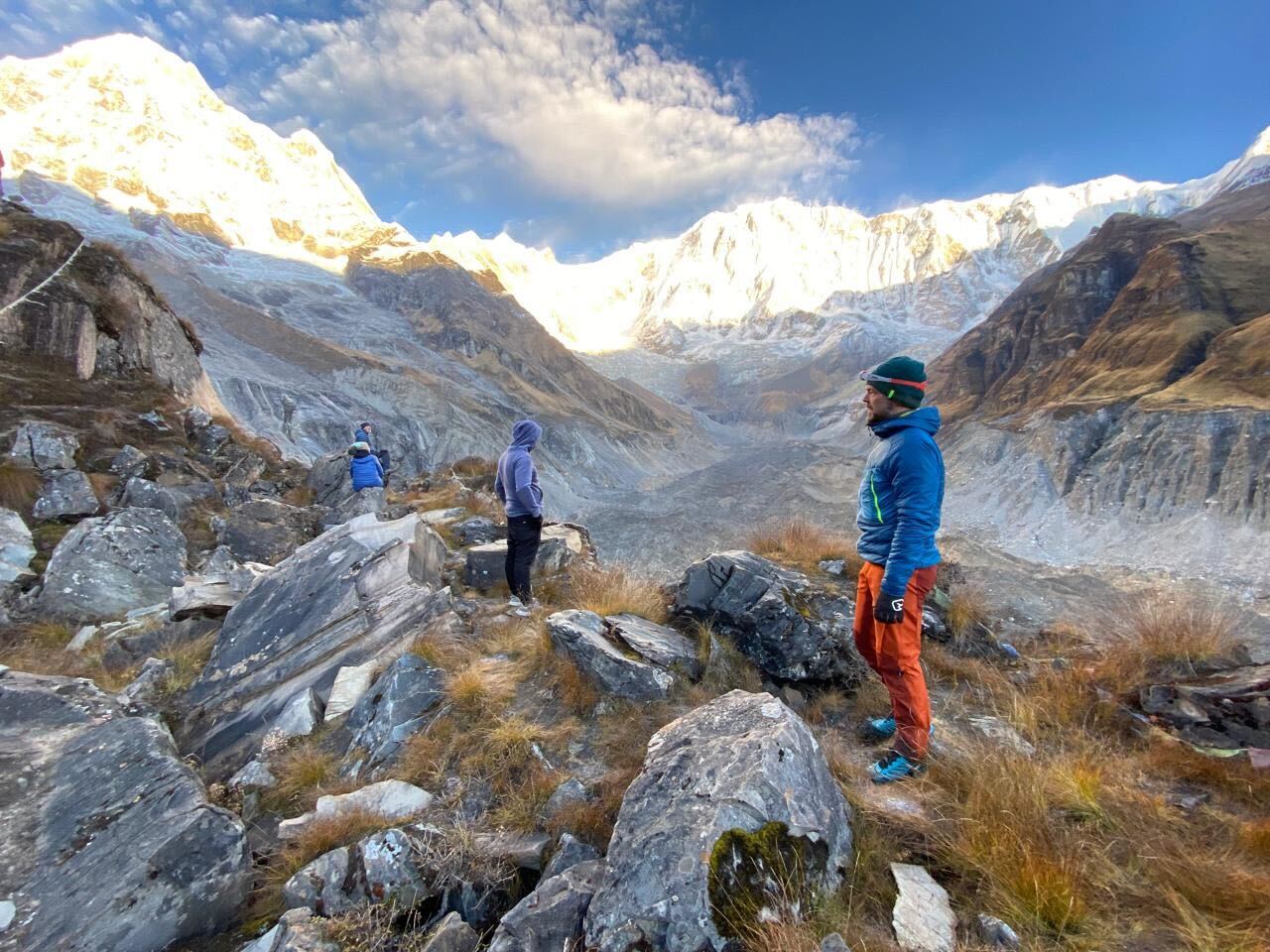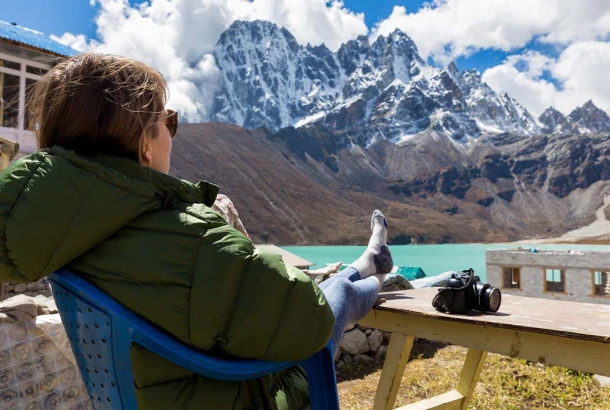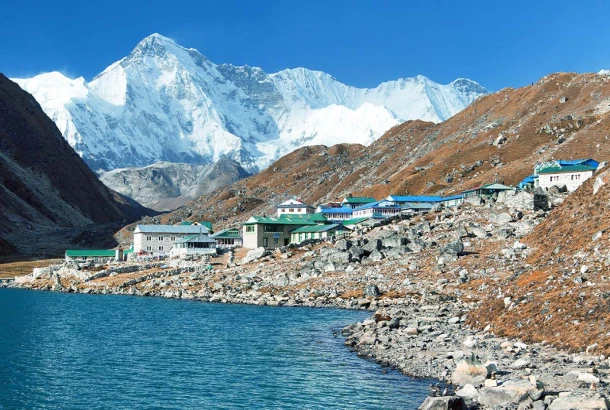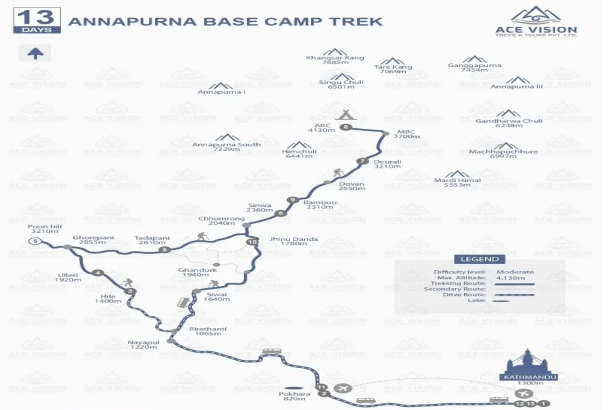Why Does the Trek Take 6 to 12 Days?
Do you remember why the Annapurna Base Camp trek can take up to 6 to 12 days are influenced by many important factors? These may include the route you take, your fitness level, your walking rate and the time you allocate to resting and acclimatizing. Weather conditions and transport arrangements also play a role.
Shorter treks are usually about 6 or 7 days long for physically fit and experienced trekkers who can keep going for long walking hours with few breaks. The shorter treks usually start closer to the trailhead, e.g., from Jhinu Danda and have more driving in an attempt to save time. Longer treks of 10 to 12 days are ideal for those who like a less rushed approach. These typically include side trips like a trek up to Poon Hill for sunrise over the surrounding landscape, giving extra time to soak up the scenery and culture.
Your physical fitness and walking speed make a big difference. Fit beginners can undertake the trek, but they usually enjoy shorter day walks and additional rest days. Those with more trekking experience might cover the trail more quickly, but every trekker must allow time to adapt to the thin air at higher elevations. Acclimatization prevents altitude sickness, and longer treks tend to incorporate rest days for this reason.
External factors like the season can highly influence your itinerary. The best time is during the peak time of the spring and autumn seasons. But during the monsoon or winter snowy seasons, there may be things. All of this makes the ABC trek extremely adaptable to suit your preferences well.
How Long is the Direct Route to Annapurna Base Camp?
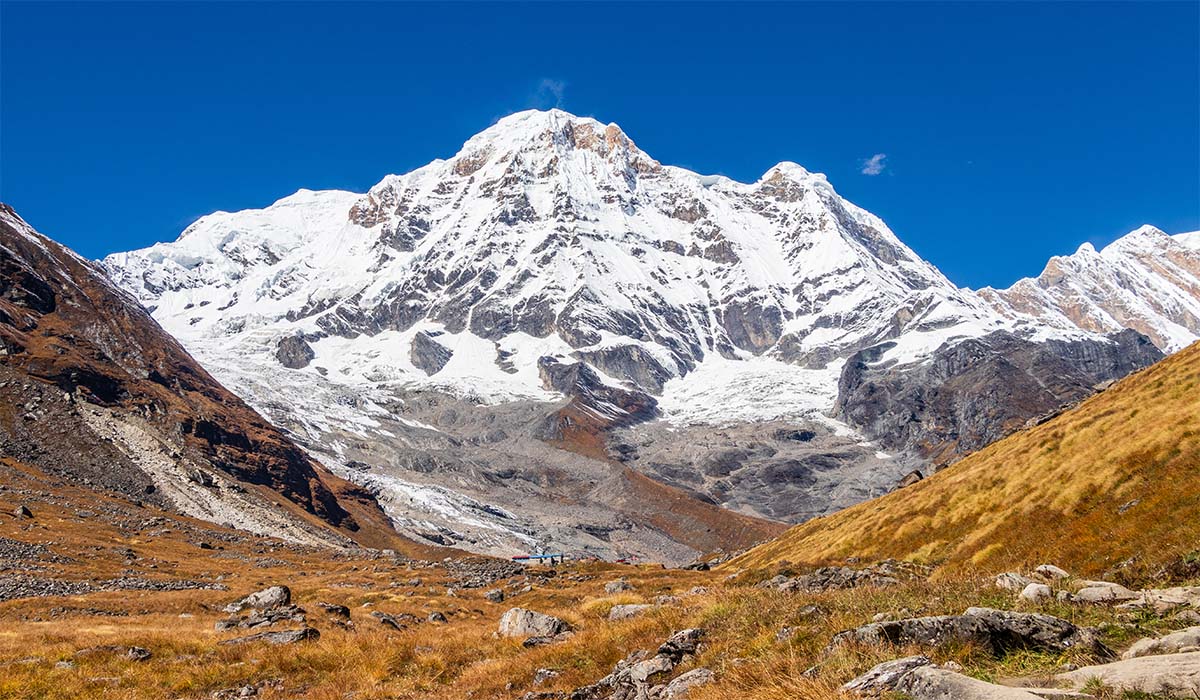
If you’re wondering, why is the same ABC trek so dramatically inconsistent in length, ranging between 6 to around 12 days? The answer lies in a combination of factors that influence your path and your speed, determining your overall experience.
Above all, the trek you choose during your trek has a lot of importance. Treks of short length, i.e., 6 to 7 days, are for experienced and fit trekkers who will be capable of tolerating longer walking hours with minimum resting hours. They usually start closer to the base of the trail, like from Jhinu Danda, with more driving to conserve walking hours.
Or longer trekking days of 10 to 12 days offer a less hurried pace for beginners or those who want to venture on side trips such as Poon Hill or just linger longer exploring villages and scenic viewpoints.
Your level of fitness and trekking experience truly matters. Beginner trekkers or those who don't enjoy quick walking typically require additional rest days and less than a day's distance per day. Experienced trekkers can walk more quickly but must have time to acclimatize. The Annapurna Base Camp height is at an elevation of 4,130 meters, making a hazardous for altitude sickness if climbed gradually.
Finally, weather as well as the right season can truly affect how long the trek lasts. Best times, like spring and autumn seasons, are optimal conditions. While monsoon rains or winter snow will slow it down. Despite so many variables, the Annapurna Base Camp trek remains highly customizable, according to your comfort, goals, and physical fitness.
Why Choose Ace Vision Treks?
Are you looking for a customized Nepal trekking itinerary? The Ace Vision Treks is here to become your trusted adventure partner that operates to craft your journey customized based on your interests you would like.
Customization is at the heart of our business. Regardless of whether you have specific dates or interests, we make sure to plan an itinerary that perfectly fits your schedule.
Would you prefer private tours so that you do not have to share the moment with others? We can arrange that too. You also get the luxury of booking local guides so that your trek is free from hassles and leaves a lasting memory.
We also believe in open, upfront pricing. Booking your package is simple on our online website once you are satisfied with the plan.
Joining us is like becoming a part of our extended family. We look after you on the trek, especially if there are any emergencies.
Our experienced and professional team has a good reputation for providing professional and dependable trekking services, so you can trek with confidence.
How Long Does the Annapurna Base Camp Trek via Poon Hill Take?
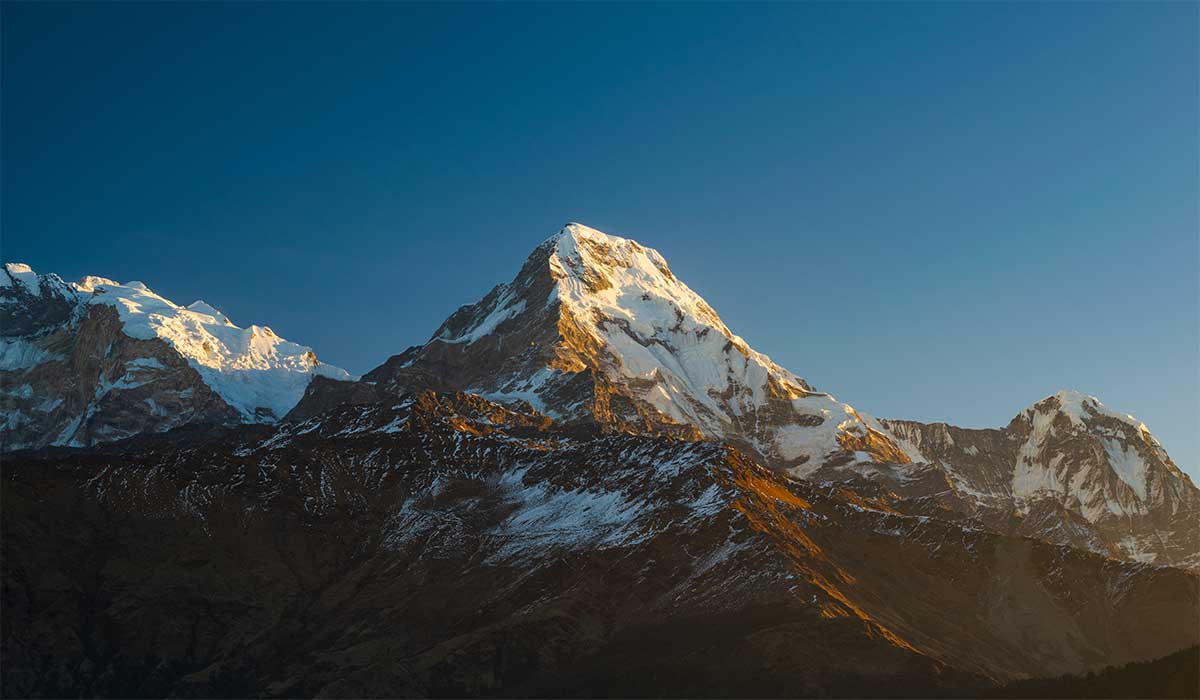
If you are planning to trek to Annapurna Base Camp and you also want to visit Poon Hill, the whole trip typically lasts between 9 and 14 days. Most people go for a 10 day trek, which is a good balance of adventure and comfort.
Then, you will usually drive from Pokhara to a nearby village from where the trek begins. After that, you will trek through peaceful small villages like Ulleri, slowly rising to Ghorepani. Then, one of the treasures of the trek is at Poon Hill. It's famous for an early sunrise, during which you get to see a golden haze over the Himalayas. It's a magical feeling that most of the trekkers assure is unforgettable.
After enjoying the views from Poon Hill, your trek continues toward Annapurna Base Camp (ABC). On the way, you’ll walk through beautiful forests and stay in traditional Gurung villages like Chhomrong. Eventually, you’ll reach the stunning Annapurna Sanctuary, where you’re surrounded by snow-covered peaks on all sides.
On your way back, you can stop by Jhinu Danda, a perfect spot to relax in some natural hot springs on the way back to Pokhara.
Adding Poon Hill to your ABC trek not only gives you more scenery diversity but also helps in acclimatization at the upper parts of the trek, thus making the upper parts of the trek less strenuous. Finally, the combined route gives you both sweeping panoramic mountain views and closeness to the towering mountains, making for an emotional experience.
How Long Does the Mardi Himal Route to Annapurna Base Camp Take?
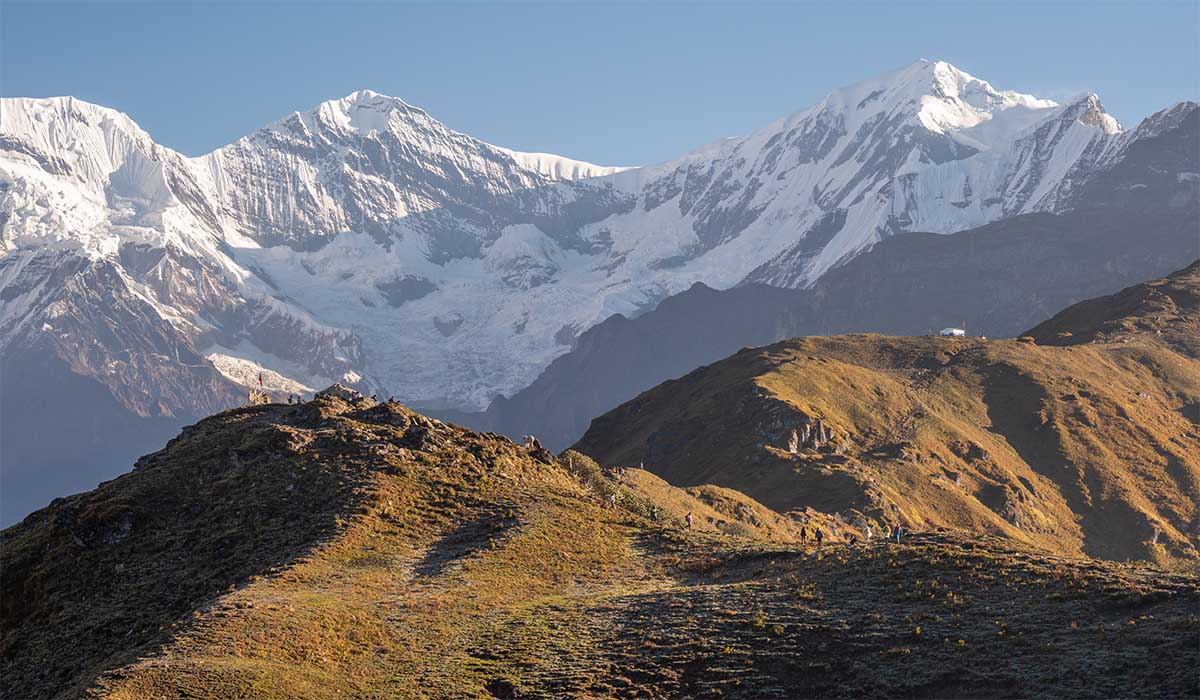
If you want to trek to Annapurna Base Camp via the Mardi Himal route the whole journey usually takes 10 to 13 days. It can depend on your pace and how you time your rests. This trek is a bit more wilderness route than the classic ABC trek. But it offers some quite fantastic views and a less populated experience.
The trek typically begins with a short drive from Pokhara to a starting point like Kande or Phedi. From there, you walk up through beautiful forests and peaceful villages, eventually reaching Mardi Himal Base Camp. This part of the trek gives you stunning views of Machapuchare (Fishtail Mountain) and other peaks up close.
Having experienced the amusement of Mardi Himal, the route joins the main ABC trail near areas like Chhomrong or Sinuwa. You then continue further into the Annapurna Sanctuary, climbing higher and higher step by step until you reach Annapurna Base Camp itself, surrounded by some of Nepal's most breathtaking mountains.
On your way back, you’ll usually descend along the regular ABC trail, which might include relaxing stops like Jhinu Danda with its natural hot springs.
Hiking the Mardi Himal trail to ABC gives you another variety of serene trails mixed with incredible ridge line vistas. The classic feel of reaching Annapurna Base Camp. It's a little more of a stretch and a little more adventurous path, but absolutely worth it if you desire a fresh perspective of the Annapurna region.
How Does Elevation Gain Affect the Duration of the Trek?

Have you ever wondered how gaining altitude can affect the length of your trek? The elevation gain plays a significant role in deciding how much time is consumed by a trek. The higher you climb, the more time your body takes to acclimatize to the altitude, and that directly affects your pace as well as the number of days you will need.
At lower elevations, you can trek longer distances each day without much trouble. But the higher you go, especially above 2,500 meters, which is about 8,200 feet, the air is thinner and there is less oxygen. That increases the work your body does, and you naturally move more slowly.
In an effort to stay safe and avoid altitude sickness, it's better to take it slow. Most trekking routes, like in the Annapurna circuit region, are designed such that there are acclimatization days or easy walking days at higher altitudes. For example, the last section to Annapurna Base Camp (4,130 meters) incorporates gradual climbing and proper rest periods to allow your body to acclimatize.
If there's significant elevation gain over rough terrain within a short period of time, you will most likely need more rest days and go slower while trekking. If the trail goes up gradually in elevation, however, you may be able to trek slightly faster and complete the trek within less time.
In short, the higher you go, the more careful you must be, and that generally means having extra days on your trek. Listening to your body and acclimatizing properly is not just necessary for safety, but really for enjoying the trip.
How Flexible is the Trek Duration with Ace Vision Treks?
Ace Vision Treks offers flexible options for the Annapurna Base Camp trek. Their standard itinerary usually takes 13 days. This includes travel from Kathmandu to Pokhara, daily treks and a few rest days for acclimatization.
If you want a shorter trek, they can customize it to fit your schedule. Treks of 7 to 10 days are possible. These shorter treks involve faster walking and fewer rest stops. Experienced trekkers can even trek in 5 days, but that demands great physical fitness and careful management of altitude elevation.
To make your trek personalized, you can contact Ace Vision Treks directly through their website or social media. They will ask you about your physical condition and trekking experience in order to ascertain the best route for you. Short treks save the time of acclimatization and it is necessary to consider how your body acclimatizes at higher altitudes.
Ace Vision Treks is all about flexibility and safety. They make sure that your trek is comfortable, enjoyable and customized to your requirements and speed.
What is the Ideal Duration for Beginner Trekkers?
For beginners, the ideal duration of the Annapurna Base Camp trek is about 8 to 12 days. This allows enough time for slow walking, acclimatization and resting. Slow walking at a moderate pace avoids tiredness and reduces the risk of altitude sickness.
Shorter treks under 7 days can be undertaken but are extremely demanding. They include long walking hours every day and minimal rest, which may not be ideal for beginners. Longer treks over 12 days offer extra latitude to enjoy scenic sites, interact with surrounding communities and acclimatize to any minimal altitude effects.
Choosing 8 to 12 days allows beginner travelers to experience the Himalayas in a leisurely way. It also lets you appreciate the landscape, visit Gurung and Magar communities and reach base camp safely without rushing.
How Does Weather Impact Trek Duration?

The weather factor plays an important role in deciding the duration of the Annapurna Base Camp trek. Heavy rain, snow or strong winds will slow down your process and, at times, force you to take a rest for safety concerns. Paths get slippery or blocked, thus taking you hours or a day longer to finish the trek.
Good weather makes the trek easy and allows you to maintain your designated pace. Clear mornings are wonderful for long walks but storms or fog can make it hard to see and find your way. Seasonal changes also affect these conditions.
Monsoon months from June to August experience heavy rain that can delay trekking. Snow during the winter months starting from December to February that makes higher trails impassable. Peak timings like spring and autumn seasons are the preferred timing for the trails that are generally dry and the weather is consistent with a smoother itinerary.
In general, consulting weather forecasts and remaining flexible with your schedule helps you complete the trek comfortably and safely.
Final Thoughts on How Long is the Annapurna Base Camp Trek?
Most travel enthusiasts would wonder, How long does it take to finish the Annapurna Base Camp trek? The answer depends on various factors, be it from your fitness level, walking pace, chosen route and the number of rest or acclimatization days, all play an important role. The weather conditions, as well as the starting point be it from Pokhara or Kathmandu, can also affect the itinerary.
For most trekkers, the ABC trek takes 6 to 12 days. Experienced climbers can complete it in 6 to 7 days by walking more per day and giving less time for rest. For first-time trekkers or those traveling at a leisurely pace, 8 to 12 days is typical so that there is enough time to enjoy scenic viewpoints, visit Gurung and Magar villages, and acclimatize to higher altitudes safely. Including side trips, such as to Poon Hill, adds a day or two but gives great sunrise views and less jarring acclimatization to altitude.
Altitude gain is crucial. Steep sections of the trek slow you down because your body needs to acclimate to thinner air. The weather can also slow you down. Sunny mornings make walking a pleasurable experience, but storms or fog can impede progress.
What makes the ABC trek truly special is its flexibility to match your fitness level, trekking background, and personal goals. With proper planning of your rate of travel and rest days, one can have a safe, enjoyable and satisfying Himalayan experience.
FAQs About Annapurna Base Camp Trek Duration
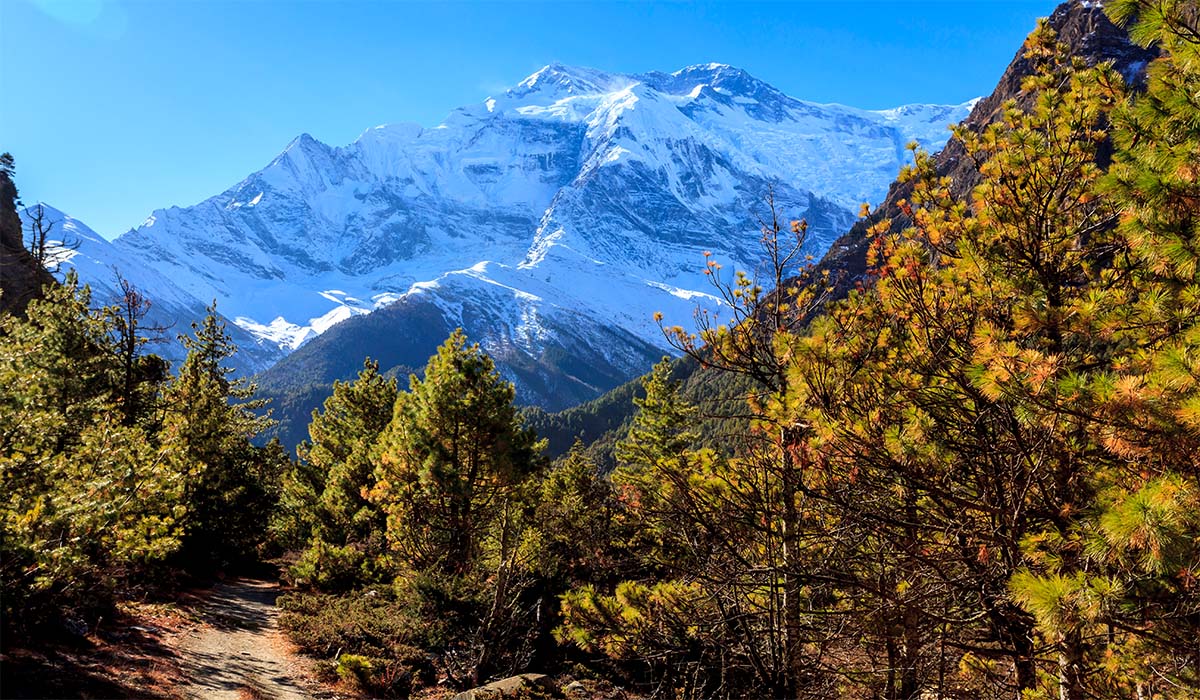
How long will the shortest trail take?
The shortest trail of the Annapurna Base Camp trek is around 6 to 7 days. The trail follows a direct route with fewer halts and is a faster but more difficult trek.
Is 6 days enough for the trek?
Yes, 6 days is enough for the Annapurna Base Camp trek if you do the shorter route. But the trek can be too fast and tiring. Having some additional days will help the trek be easier and enable you to enjoy the views more.
Can I extend my trek if I want to stay longer?
Yes, you can extend your Annapurna Base Camp trek if you wish to stay on. Trekkers typically incorporate extra days for rest, an excursion to nearby villages or just soaking up scenery. You can adjust the itinerary with your agency or guide as needed.
How many rest/acclimatization days are needed?
For the Annapurna Base Camp trek, there is no requirement for numerous acclimatization days for the majority of the trekkers, as the altitude is moderate. A rest day is mostly enough. Some tours do the trek without rest days, but including a rest day will ease the trek.
Does trek duration affect cost?
Yes, the length of the Annapurna Base Camp trek determines the expense. The more days on trek, the more it will cost in terms of accommodation, food, guides and permits. Conversely, a shorter trek is less expensive but does not allow you to appreciate the path as much.
